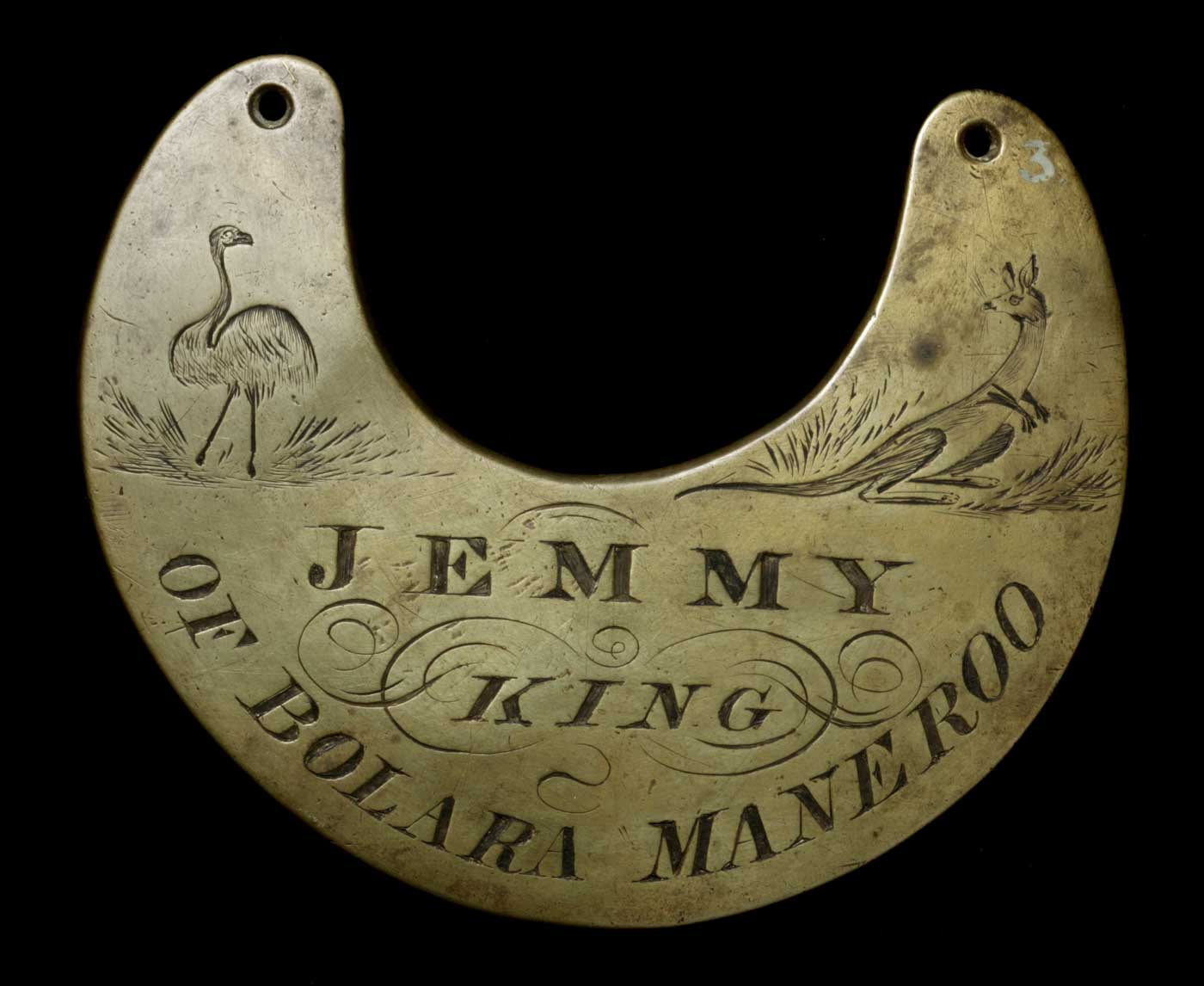King of Bolara Maneroo
The deep crescent shape of the sand-cast brass gorget copies exactly the shape of military gorgets. The shape, lettering and design suggest an early to mid-19th century date for the gorget.
The piece was very professionally produced with well-balanced lettering and confident engraving. The naively drawn emu and kangaroo are lively and expressive.
The location of Bolara Maneroo can be identified with some confidence. It is more difficult to identify the actual property, which may have been one of three.
The most likely is Bollero Station, lease number five in the Maneroo district (now written Monaro) which was owned by William Barnett [1] but it may have been one of two other leases with a similar name: Bolaro Station, in the district of Murrumbidgee, which was the station of Thomas Rourke [2] or lease number 91 in the Maneroo district, Bollera Station owned by Francis Mowatt. [3]
Jemmy’s identity can only be guessed at from the information so far uncovered. On the government blanket distribution list ‘Return of Aboriginal natives at Janevale Murrayshire June 1834’ there are several Jemmys listed and a ‘Tommy, King of Bolero’. One Jemmy in particular is listed as having a gorget although the location name is different:
Breast plate chief, Jemmy King of Maroma, probable age 20, number of wives 1, children — 1 male 1 female, location of territory — between Jemmor Jemordary and Yass.
Footnotes
[1] WH Wells, A Geographical Dictionary; or Gazetteer of the Australian Colonies, 1848, The Council of the Library of New South Wales, Sydney, 1848, p. 61 and WK Hancock, Discovering Monaro: a Study of Man’s Impact on His Environment, Cambridge University Press, Cambridge, 1972, p. 51.
[2] WH Wells, A Geographical Dictionary; or Gazetteer of the Australian Colonies, 1848, The Council of the Library of New South Wales, Sydney, 1848, p. 61.
[3] WK Hancock, Discovering Monaro: a Study of Man’s Impact on His Environment, Cambridge University Press, Cambridge, 1972, p. 51.
